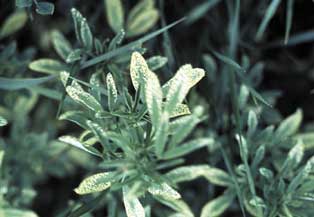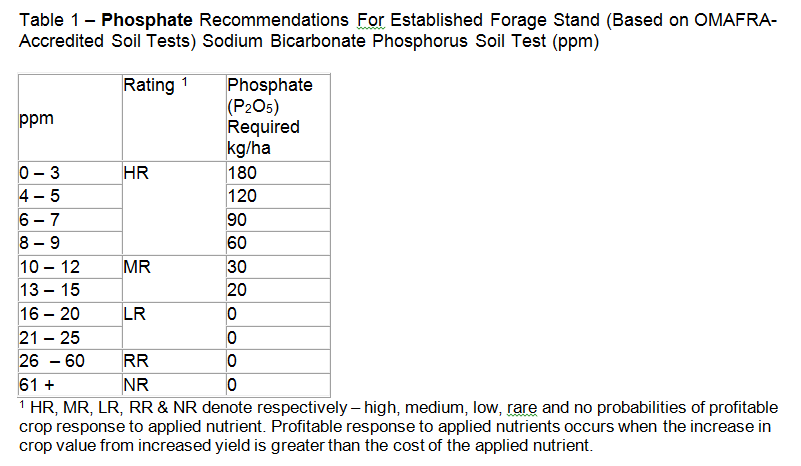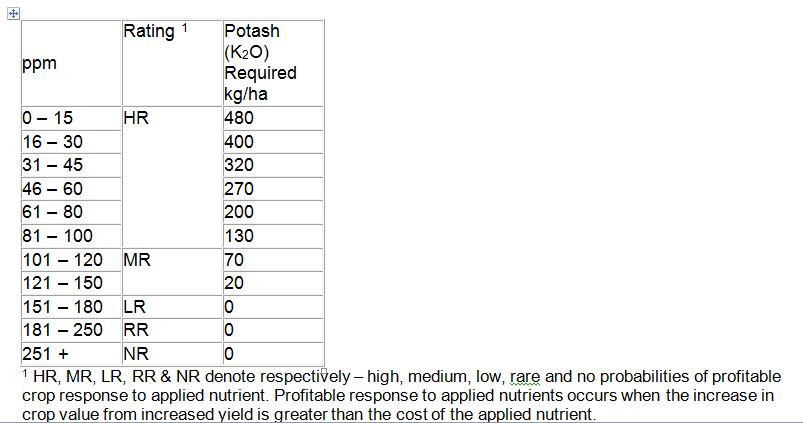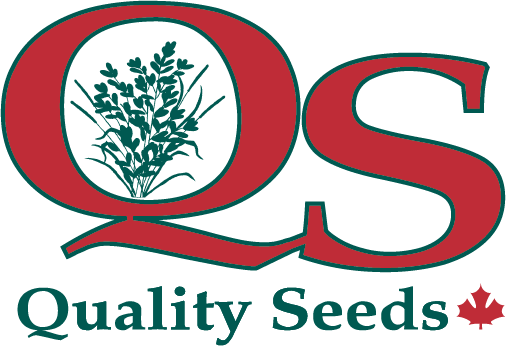Don’t Lose Forage Yield To Poor P and K Fertility

With higher land costs, tighter forage inventories and stronger hay prices, increasing yield is becoming key to reducing our cost of producing forage. Three factors limiting our forage yields are old stands, poor establishment and low soil fertility. Good soil fertility is essential to both yield and persistence of forage crops. Phosphorus (P) and potassium (K) fertility management is often overlooked, but is fundamental to producing forage to feed livestock and being competitive in today’s forage market. Fertilizer prices are currently lower than they have been in the recent past, and it may be a good time to catch up on P and K fertility.
Soil Testing
Soil testing and knowing how much P and K are available in the soil to start with is critical. Take a representative soil sample, send it to an accredited lab and use the results to determine optimum fertilizer rates. Keep records. Monitor whether fertility levels are increasing, decreasing or staying in an optimum range over time. Soil samples should be taken at least every 3 years. The time and effort it takes to do the soil sampling seems to be an obstacle for some, but with the cost of fertilizer there is likely no greater potential return on the cost and extra effort. The laboratory and mailing costs plus an incentive for the kids to do the sampling for you is small relative to your fertilizer bill and potential yield increases. Refer to OMAFRA Factsheet 06-031 “Soil Sampling & Analysis” www.omafra.gov.on.ca/english/engineer/facts/06-031.htm.
Relationship Between Soil Test & Forage Yield
When you get your soil test report, check the “sodium bicarbonate” phosphorus (P) and “ammonium acetate” potassium (K) soil test levels (ppm). Use these tests, as other tests (Bray or Mehlich) cannot be interpreted using Ontario calibration data. How do your P and K soil test levels look?
Research shows that the yield loss of alfalfa is significant when P soil test levels are much below 12 ppm and K soil tests are below 120 ppm. The yield losses at low soil test levels are significant. A positive yield response from applying fertilizer will be seen when soil tests are below these optimum levels. Identifying fields with the lowest soil tests can help you target those fields to get the most return from your fertilizer dollar investment.
On the flip side, the yield curve at high soil fertility levels is fairly flat. Don’t expect any significant yield increase from applying fertilizer once the soil test have been built up to higher levels. In these cases, you can choose to apply fertilizer to replace the nutrients removed by the crop to prevent future nutrient deficiencies, but don’t expect extra yield from that maintenance application.


Figure 1 – Potassium deficiency in alfalfa is indicated by small, light dots near margins of the leaflets. (Source – OMAFRA)
Crop Removal Of P and K
Forage crops remove a lot of nutrients and therefore have high soil nutrient requirements. With an alfalfa-grass mixture, a typical amount of P and K removed per tonne of hay harvested is equivalent to about:
- 13.5 lbs (6.1 kg) of P205
- 54 lbs (24.6 kg) of K2O.
As an example, assuming a mixed stand with a modest yield of 3.2 tonnes per acre per year, hay will remove about 43 lbs (20 kg) of P205 and 173 lbs (78 kg) of K2O every year. There is about four times the removal of K2O than P205, so K is often the more limiting soil nutrient.
Unlike nitrogen, forage crops cannot generate P or K out of thin air. Without replacing P and K with manure or commercial fertilizer, the soil tests will drop quickly. Because P and K removal is so significant, forage fertility needs to be managed within the life of the stand. As an example, let’s assume that it takes about 35 lbs/ac of P205 and 20 lbs/ac of K2O to move the soil tests by 1 ppm on some soils (these amounts will vary according to soil type and conditions). After only 4 years of harvesting forage without applying fertilizer or liquid manure, the P soil test could drop by 5 ppm and the K by 35 ppm. If the soil tests drop below the optimum levels during the life of the stand, this will significantly reduce forage yields. We also need to maintain soil nutrient levels for the next crops in the rotation. At lower soil test levels, this “soil mining” is not sustainable. Yet it goes on in many hay fields every year.
There is a wide range of soil fertility levels found in hay fields across the province. Dairy farms that apply a lot of manure typically have higher P and K levels. However, K deficiency has become more common, even on some dairy farms! Hay fields that are infrequently (or never) rotated and seldom (or never) receive manure or commercial fertilizer, are typically very low in soil fertility and yield. In a soil fertility survey by the East-Central SCIA, 30% of the fields tested were below 10 ppm P205, while an astounding 81% of fields were below 100 ppm K2O! In an 2012 OMAFRA alfalfa tissue test survey, 37% of the samples were below the critical level of 1.7% K, indicating a deficiency of soil K.
There are 2 approaches used to determine optimum fertilizer application levels from soil test results, depending on whether you are looking for short or long term results.
1. Sufficiency Approach
Tables 1 and 2 provide the OMAFRA P and K recommendations on established forage stands. These recommendations use the “sufficiency approach” to supply the optimum needs of the current crop by giving the greatest short term (1 year) net returns to fertilizer.
2. Build Up & Maintenance Approach
A longer term method also used to determine fertilizer application rates is the “buildup and maintenance approach”. This starts by determining the amount of nutrient removal of the crop (approximately 13.5 lbs of P205 and 54 lbs of K2O per ton of hay). It adjusts this by an amount required to increase (or decrease) the soil test levels (example – 35 lbs/ac of P205 and 20 lbs/ac of K2O to move the soil tests by 1 ppm) to targeted optimum levels (12 ppm P and 120 ppm K), amortized over several years. Applying P and K greater than removal rates to soils that test much above these critical levels rarely results in a profitable response. Refer to OMAFRA Publication 611, Soil Fertility Handbook (http://www.omafra.gov.on.ca/english/crops/pub611/p611order.htm ).
Other Suggestions
For P and K recommendations at seeding (banded or not, with or without a nurse crop), or information on nitrogen rates, pH, manure application, and micronutrients such as boron, refer to the Forage Fertility section of OMAFRA Publication 811, Agronomy Guide. www.omafra.gov.on.ca/english/crops/pub811/3fertility.htm. If manure is applied, reduce the fertilizer application according to the amount of P and K in the manure.
There is beginning to be some significant yield responses in Ontario when applying sulphur (S) to alfalfa. In field trials, the yield response observed to applied S has sometimes been dramatic, while in others there is no response. Tissue sampling of alfalfa is a useful diagnostic tool in predicting whether there will be an economic response to applying S. Refer to “Sulphur On Alfalfa” at www.qualityseeds.ca/blog/7-sulphur-on-alfalfa.
For information on “Boron Deficiency In Alfalfa”, refer to


Table 2 – Potash Recommendations For Established Forage Stand (Based on OMAFRA-Accredited Soil Tests) Ammonium Acetate Potassium Soil Test (ppm)


